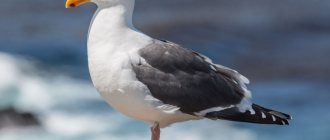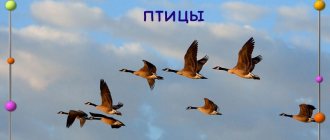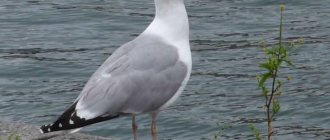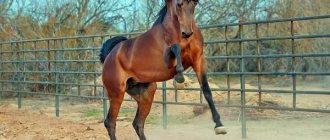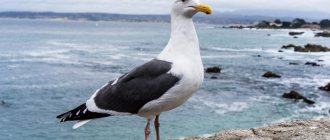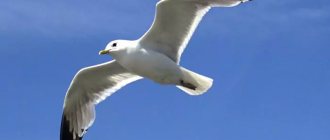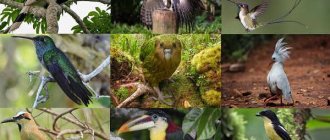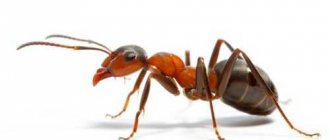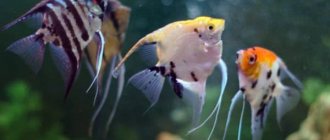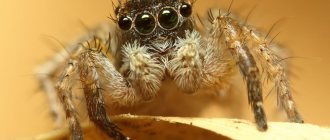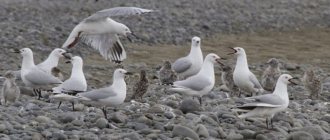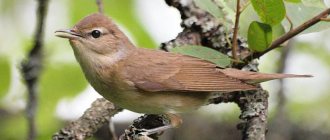Having found a small chick on the street that is not yet able to fly and get its own food, most people cannot pass by the helpless creature and decide to take it home. However, not everyone understands what difficulties they will have to face in order to raise a healthy and strong bird from a small ball of fluff. The first thing you should do when you bring a chick home is to determine what species of bird it belongs to. Only in this case will you be able to choose the optimal diet for him. If you are not sure that you can cope with this task yourself, it is better to take the chick to a veterinarian, who will not only determine its species, but also prescribe the necessary vitamin and mineral supplements.
This article will allow you to find out what a seagull chick looks like and what to feed it at home. You can also read information about when your pet will be big enough to be released into the wild.
Origin of the species and description
Photo: Chaika
The gull genus belongs to the gull family and includes several dozen species that differ from each other in size (sometimes tens of times), color, habitat, preferred food, and much more. It was described back in 1758 by Carl Linnaeus under the name Larus. Two most characteristic species can be distinguished: the first is the common gull, also known as the lake gull, and the second is the sea gull. Lake fish are much smaller in size and live in fresh water bodies. Their scientific description was also made by Linnaeus in 1766, the name in Latin is Larus ridibundus.
Sea gulls are large and live close to the seas; they were described by the same Linnaeus in 1766 under the name Larus marinus. In total, the gull genus includes 23 species; previously some others were also included in it, but after genetic research they were transferred to related genera. The most ancient birds inhabited the Earth about 150-160 million years ago, but gulls are a much younger family. Its most ancient fossil representatives found lived on our planet after the great extinction at the end of the Cretaceous period - approximately 50-55 million years ago.
Video: Seagull
Apparently, they were among the families formed due to the fact that as a result of this extinction, many ecological niches were vacated, which were occupied by the descendants of the survivors, including birds. But even then it was far from the appearance of the seagulls themselves - the most ancient of them inhabited the Earth approximately 7-12 million years BC. Chaikovs are generally characterized by dynamic evolution: this group quickly adapted to life near water. At first these were inland reservoirs, and then they began to develop the seas. Gradually they received more and more evolutionary adaptations for life near and in water, and this process cannot yet be considered complete.
But what they definitely did was conquer most of the Earth, starting to settle from two centers: the remains of the oldest populations of gulls were discovered in Central Asia and South America. They succeeded in this thanks to their high fertility and ability to adapt.
Crocodile eggs
Crocodile eggs are most popular in Jamaica and Australia. Before you start cooking, they need to be washed thoroughly, as mushrooms actively reproduce on the shells.
These eggs have a fishy flavor and can be eaten on their own or as one ingredient in a dish. In the Philippines, they are even added to ice cream, mixed with fruits and flavors.
Appearance and features
Photo: Seagull bird
Black-headed gulls weigh 200-400 grams and look slender. Sea gulls weigh many times more - 1.2-2 kg; they are large birds, reaching up to 80 cm in length. There are many other species, each with their own significant differences: two gulls of different species can look much more different in appearance than from birds with completely different names.
The systematization of gulls is quite complex; different ornithological schools can divide them according to their own systems. Additionally, the matter is complicated by the ability of gulls of different species to interbreed and produce offspring, the external characteristics of which most often combine the characteristics of both.
It is possible to identify common features that are characteristic of the vast majority of representatives of the genus: for example, gulls have a streamlined and long body with good aerodynamics, long wings and a square tail. The membranes used for swimming are clearly visible on the legs - after all, this bird can dive for prey, and sometimes simply frolic in the water.
They are characterized by white or gray plumage, with black markings often found on the head or wings. Young birds usually have feathers of a brownish tint, then with age they become lighter until they turn completely white in older gulls. The feathers are waterproof, making it easy for the seagull to swim.
The beak is strong and quite long, its end is curved - prey in water bodies is slippery, and a beak of this shape helps to hold it. The legs are short, black or red. It is not easy to distinguish between males and females; to do this, you need to know the small signs by which this can be done in each species.
Snail eggs
Snail eggs taste like a mixture of mushrooms and grass and have a slimy texture. Lately they have become more and more popular.
Short, fresh and stylish: what hairstyles are suitable for women over 50 (photo)
Bitcoin: Why it takes so much electricity to support the cryptocurrency
What does the church advise to those people who have broken Lent?
In Italy, snail eggs are sold in 50 gram jars and cost about $90. In Barcelona they go on sale in 0.9kg bags and cost £1,600. Here they are eaten in salads or on canapés.
In France they are served on toast or grilled. There is an opinion here that snail eggs can improve the quality of sexual life.
Where does the seagull live?
Photo: White gull bird
They live on the coasts, both seas and rivers with lakes. Some seagulls even settle in swamps. In short, their range is very wide; these birds are found on different continents and in different climatic zones. Some species are migratory, others remain for the winter.
Each species has its own distribution area.
Thus, common gulls are common in:
- Russia;
- most of Europe;
- Turkey;
- Iceland;
- southwestern Greenland;
- Central Asia.
As can be seen from this, they are able to live in a wide variety of climates, from the subtropical Mediterranean and hot Uzbekistan, to cold Greenland, the Arkhangelsk region and Kolyma.
Some species of seagulls are synanthropic, that is, they settle near people and associate their way of life with them. Representatives of all types of people are not afraid, they often fly closer and begin to ask for food, they can even steal it while the owner’s back is turned. They often follow ships and see them off with characteristic cries.
Seagulls can be found not only near bodies of water, but also at a distance from them: in search of food, they can fly to agricultural land or to cities tens of kilometers away from their native lake or sea. You definitely won’t meet a seagull except high in the mountains, in the desert or in the dense jungle.
Interesting fact: Gull colonies are being studied very actively; their example is used to study the characteristics of animal behavior in such large communities. Many principles of the science of ethology arose precisely on the basis of studying how seagulls and their closest relatives, who also form similar communities, behave.
Habitat
Seagulls prefer to settle where there is a body of water nearby. Their favorite place is the sea coast. However, some species prefer fresh reservoirs and rivers to salt water. Such noisy birds simply love to play pranks. They cause a lot of trouble for people, dirtying everything possible with their droppings, stealing food, and these birds constantly scream loudly. Seagulls fly in large numbers to sea vessels to beg for something tasty with loud cries. Experts consider such birds to be the orderlies of the waters and the coast.
What does a seagull eat?
Photo: Seagull in flight
The diet of these birds is varied; they can eat anything, including bread, sausage and ice cream. Tourists who leave food items in visible places are regularly convinced of this. But the basis of the seagulls’ menu is still the living creatures that they have to hunt.
This:
- shellfish;
- crabs;
- jellyfish;
- fish;
- squid;
- rodents;
- insects;
- carrion.
They can circle over the water, waiting for prey, for a very long time - if the hunt does not go well, they sometimes have to do this for several hours in a row without results. And they are capable of this - these birds are very hardy. As soon as they find prey, they quickly fly after it and dive into the water, and then grab it with their beak. They can use a smart approach and follow a large fish: it also hunts and guides the seagull to a smaller fish, after which it tries to intercept the catch. And even if not, when a large predator catches the prey and tears it into pieces, the seagull will try to intercept its piece - in the hope of this, they often circle the sharks.
If the prey managed to escape, then the seagull again has to go hunting, and its reserve of strength should be enough to make many unsuccessful dives in a row. Despite the dexterity of these birds, hunting is difficult, which is why seagulls prefer to beg for food from people. It’s easier for them to catch crabs or jellyfish washed ashore - the former run away slowly, and the latter cannot do this at all. That’s why seagulls love to feast on them and regularly visit the most productive places on the shore, onto which the waves wash up living creatures.
And if it has already managed to decompose a little, it doesn’t matter - seagulls do not disdain feeding on carrion. They can also examine garbage dumps located relatively close to the shore in search of something edible. Also, seagulls that have not found food for themselves at sea can catch amphibians, rodents, destroy other people's nests and eat eggs.
Now you know what a seagull eats. Let's see how she lives in the wild.
Lifespan
Young birds find their mate at the age of 1-3 years. These birds live in nature for approximately 20 years. But the lifespan of seagulls depends on the species. For example, herring gulls can live up to 50 years.
It should be noted that now many people have begun to consider these birds as harmful , since they pose a great threat to the ecological system. This is due to a decrease in the number of fish in the seas, which has become especially noticeable in the last 20 years. The result of this decision of people is the mass destruction of seagulls.
These birds are of great importance to the environment. Seagulls clean the area adjacent to their places of residence, eating carrion and remains of human food.
Today, sailors use modern technologies and use the latest devices. But before that, the weather and the approaching storm could be recognized by the behavior of seagulls . If these birds calmly circled around the coast or landed on the mast of a ship, then the weather will be good. If the birds are on the shore and do not fly, there will be a storm.
There are species of seagulls that are on the verge of extinction. There are also those that have not yet crossed this dangerous border, but their population is declining significantly every year. These include relict, pink, red-legged, Chinese, and black-headed gulls. These bird species are protected and listed in the Red Book.
Features of character and lifestyle
Photo: Sea gull
They are active during the day and spend most of their time trying to find food for themselves - and you need a lot of it, because seagulls are very voracious. In these searches they can fly many kilometers away from their habitat, but by the end of the day they return to their nesting sites to spend the night. They are reliably sheltered from the wind, and their large numbers protect them from the predators of seagulls.
They are characterized by ingenuity and they show it in different ways: for example, if a seagull cannot open the shell of a mollusk with its beak, then it throws it onto sharp stones from a height to break the shell. Seagulls can often be found on the streets of cities not far from bodies of water; they pester everyone they meet with food, in the hope that they will share it with them. They can fly to feed either singly or in flocks. The first option is fraught with conflicts between birds: they strive to rob their neighbor as soon as he gapes, and then he will certainly use his beak and claws to take revenge on the offender.
Their entire lifestyle is based on how good the weather conditions are in the coming year and how much food there is for them. If the year turns out to be bad, they may not lay eggs at all, but at the same time they often still sit on the nests as if they were hatching them. If conditions are bad year after year, they can move as a whole colony to another place.
The seagulls do not allow anyone to take a step into their small piece of territory around the nest - this applies to both relatives and everyone else. If another seagull finds itself in this territory, then a fight begins, and if it is invaded by a predator or a person, then the entire colony of seagulls starts screaming, they fly up into the sky and try to expel the newcomer, dousing him with droppings.
Interesting fact: Black-headed gulls often take prey from smaller birds. They simply swoop down on them, start hitting them with their beaks and force them to drop their prey in order to defend themselves. After that, they simply drive the poor fellow away and appropriate it for themselves.
Nutrition
The birds' diet includes a wide variety of fish, shellfish, crustaceans and crabs. They do not disdain the eggs of other birds. They often settle near fish processing plants and feed on their waste. They also eat small animals and insects; they can eat leftovers and carrion, and eat plant foods. They can often be found in waste dumps.
As the most powerful representatives of birds, they can steal food from other birds.
Social structure and reproduction
Photo: Seagull chick
Gulls live in entire colonies, each numbering from 500 to 5,000 individuals, whose nests are located close to each other - from half a meter to ten meters. Although life in such a colony has its advantages - first of all, it is protection from predators, it also has many disadvantages. The main thing is the quarrelsome nature of the seagulls themselves. They are each other's worst predators, and conflicts constantly arise between them due to the intrusion of one gull into the territory of another or over food.
Seagulls are monogamous and form a pair at once for many years - usually until the death of one of the partners. The breeding season begins in warm areas in April, and in colder areas in May or June. By that time, migrating gulls just have time to fly in and look around, to divide nesting sites - during this division, males often fight with each other for the best ones. When the fights subside, the males choose females for themselves, after which ritual feeding is carried out: if the female accepts food, she agrees to form a pair, after which the male brings her to his site.
A nest is built on it. For this, seagulls use branches, moss, algae, and shells. They often visit people for materials for them, and given their tendency to carry small objects, it may contain all kinds of beads, hairpins, and threads. Because of this behavior, coastal residents do not like them, but seagulls also perform a useful function: they remove a lot of garbage from the streets.
The nest itself is usually round and quite large, with a depression in the middle. They are located on rocks and cliffs, or right on the sea coast. If the shore is inaccessible to seagulls, they have to nest a little further away, then they try to settle on the plateau. The female lays 2-3 eggs of a dark color with green tones, after which she and the male hatch them in turn. The eggs take 20-30 days to develop, then voracious and noisy chicks are born - they begin to demand food immediately. They can walk independently a week later, but even after that their parents continue to feed them.
Both parents are involved in this, and even together it is difficult for them to feed several chicks: every day they require more and more food, feeding needs to be done 5-6 times a day, and a lot of small food always needs to be brought to it. At the same time, the birds still need to eat themselves - they are not always able to do this as well as before. Chicks begin to learn to fly at the age of a month, and fully master flight by two months, after which they begin to look for their own prey and settle separately from their parents. Puberty in gulls usually occurs in the second year of life, although in some species it comes earlier - at 8-10 months; There are also those who have to wait more than three years.
Raising chicks
Married pairs of these birds do not break up throughout their lives. Each partner remains faithful, content with the company of the only chosen one for the rest of his life. But when their companion dies, as a rule, they choose another.
The mating season for birds occurs once a year. The courtship of birds before mating consists of making clear, rather complex movements of the feathers, body and head. This ritual is usually accompanied by vocal sounds.
The bird's voice in these situations is similar to "meowing". Before the contact itself, the partner presents the lady with a treat. These birds are engaged in building a nest from May to June. Cozy houses for kids can be located on the sand, right on the grass or on narrow ledges. The building material for arranging the nest is selected taking into account the type of terrain. Seabird species pick up shells and wood chips. At the North Pole, birds, as a rule, use grass, dried algae, and reeds for this purpose.
The mother lays up to 3 motley-colored eggs at a time. Then she incubates the offspring for a month , and the male supplies the partner with food. Chicks are not born simultaneously, but, as a rule, with a time interval of 1-2 days. The young animals, covered with thick plumage, show extraordinary vitality from the first minutes of life, and already have developed visual organs. But the chicks do not have the ability to move independently. Only 3-4 days pass, and the “youth” are already beginning their first journey through the bird colony.
The struggle for survival among chicks is very fierce, and adults most often give preference to older ones. So, with a lack of food, the younger chicks die.
The plumage of newborns is a very good camouflage for them, which saves them in case of danger. It is thanks to the color of the feathers that the babies become almost invisible against the backdrop of a sandy landscape or sea stones.
Natural enemies of seagulls
Photo: Seagull bird
Most seagulls are fairly large birds; they fly quickly and have well-developed sense organs. As a result, they are not threatened by many predators—some species have almost no natural enemies at all. But for smaller gulls, these are large birds of prey, such as eagles or kites.
Attacks on gulls occur quite rarely, because flying into a flock is dangerous: usually the predator grabs one of the birds and retreats with it. Rarely, seagulls can be killed by sea creatures such as octopuses. Sometimes they are in danger on the ground - for example, they are hunted by foxes.
But predators do not cause as much damage to seagulls as their relatives themselves. They live in large colonies, where the aggressive and quarrelsome nature of these birds of prey is very evident: they constantly steal food from each other, fight over this or for other reasons, and even tend to attack the nests of their relatives.
Most often this happens on days when there is little prey and the birds begin to starve. It is quite difficult to keep the clutches intact, and then also to protect the chicks, when you also need to feed, and then feed the offspring. Therefore, many seagulls do not even have time to hatch from their eggs or die very young - they are simply killed by their relatives.
People also exterminate seagulls: in some areas they are considered a harmful bird that destroys valuable fish, although this is almost always not the case - they almost always hunt small fish that are not of commercial value. In some places there are simply too many of them, and they begin to interfere.
